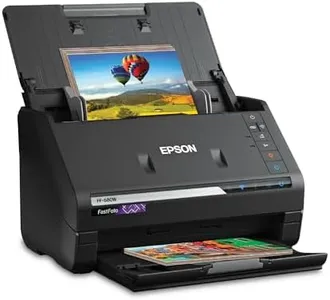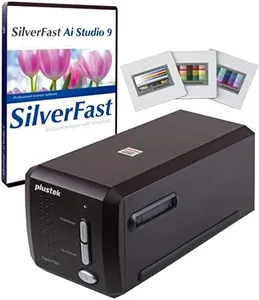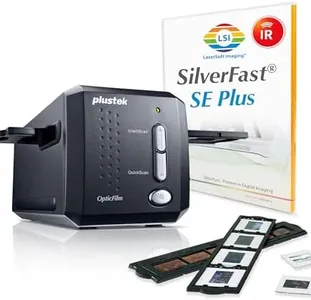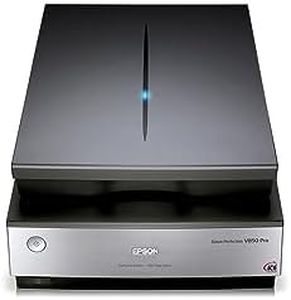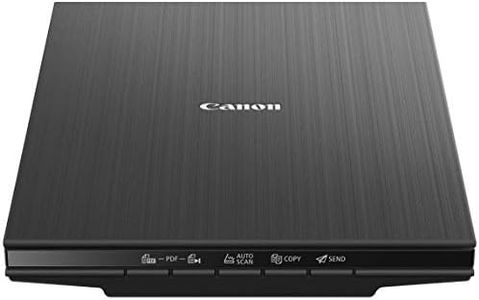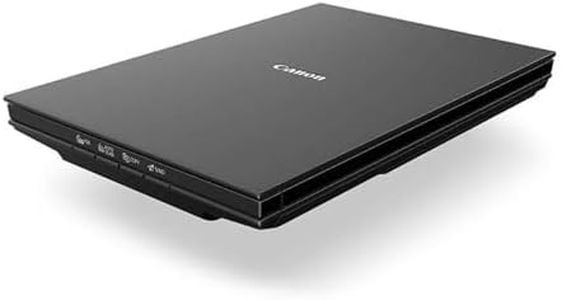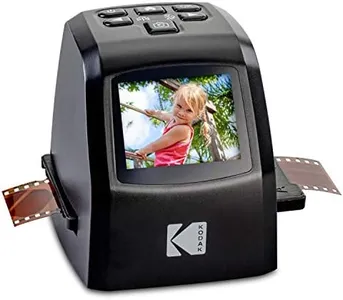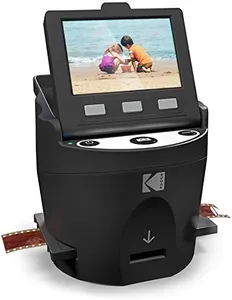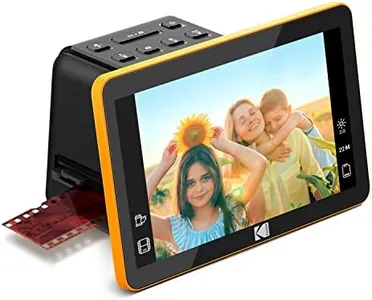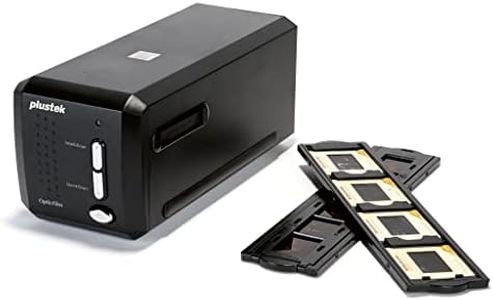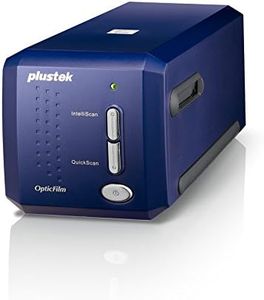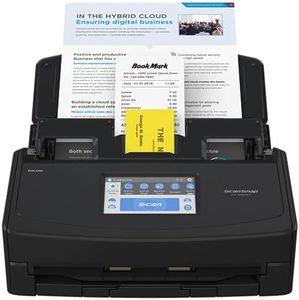We Use CookiesWe use cookies to enhance the security, performance,
functionality and for analytical and promotional activities. By continuing to browse this site you
are agreeing to our privacy policy
10 Best Photo Scanners
From leading brands and best sellers available on the web.By clicking on a link to a third party's website, log data is shared with that third party.
Buying Guide for the Best Photo Scanners
Choosing a photo scanner can feel overwhelming with all the technical terms and features, but the right one can make preserving your old prints much easier and more rewarding. Start by thinking about what you want to scan—just old photos, slides, negatives, or a mix? Also consider how often you’ll use the scanner and how comfortable you are with setting up technology. The best scanner for you will match your needs in terms of quality, ease of use, and versatility.Resolution (DPI)Resolution, usually measured in DPI (dots per inch), tells you how much detail the scanner can capture. Higher DPI means more detail and allows for larger reprints without losing quality. For basic snaps or sharing online, 300 to 600 DPI is fine; for archiving, restoration, or enlarging old photos, consider 1200 DPI or more. Choose based on what you'll do with the scans—higher DPI for preserving family heirlooms, standard DPI for everyday archiving.
Scanner TypeThere are flatbed, sheet-fed, and dedicated film/scanner types. Flatbeds are great for versatile use and handling a variety of materials including fragile photos, while sheet-fed are faster for stacks of standard prints but less flexible. Dedicated film scanners excel at slides and negatives. Think about what you’re scanning most: flatbeds for mixed and delicate items, film scanners for slides/negatives, sheet-fed for lots of regular-sized prints.
Color DepthColor depth, described in bits (like 24-bit or 48-bit), is how many shades a scanner can recognize in each color. Higher color depth gives more accurate and vibrant images, especially important if you want to edit photos later or preserve every detail. For basic needs, 24-bit is good, but for archiving or professional work, 48-bit is better.
Scan SpeedScan speed affects how quickly you can get through your pile of photos. This spec is important if you have a lot to scan or are in a hurry. Faster scanners are convenient but might be noisier or offer less detail, while slower scanners often trade speed for higher quality. Prioritize speed if you're digitizing hundreds of photos; otherwise, focus on quality.
ConnectivityConnectivity options include USB, Wi-Fi, or even memory card slots. USB provides reliable connections to computers, while Wi-Fi lets you scan directly to different devices wirelessly. Memory card slots are useful for scanning directly onto a card. Choose what matches your setup—use Wi-Fi for flexibility with different devices, or USB for a simpler, more stable connection.
Software FeaturesPhoto scanners often come with software for editing, organizing, or restoring images. Some offer features like dust and scratch removal, color correction, or automatic cropping. These extras make scanning easier and improve results, especially for old or degraded photos. If you're not comfortable editing photos yourself, good software can save time and frustration.
Media Size and VersatilityThis refers to the sizes and types of originals the scanner can handle—standard prints, large photos, documents, 35mm slides, or negatives. Make sure the scanner fits what you own. If you have lots of odd-sized or fragile materials, look for a versatile scanner with adjustable lids or special holders.
